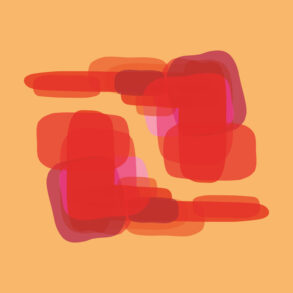Peat is suitable to protect us humans from the effects of technology. With this statement by Rudolf Steiner, peat fiber research began in 1920. It was budding. Gilda Bartel spoke to Peter Böhlefeld, who has been researching this topic since 1998 and who has developed a range of peat products for the Wandil company.
How did the idea of using peat fiber come about?
There was a fiber exhibition in Berlin in 1917. Nettle fiber, which Rudolf Steiner found to be good, was also exhibited there. But peat fiber is better – he mentioned it and gave verbal advice to people: if the fiber is refined, it will be the strongest there is in the plant kingdom and will protect people from the effects of technology in the future.
Two historical currents have to be considered: first, cellulose production had emerged. Second, the German Moor Society was already looking for other uses for peat.
Around 1919/20, after completing his training as a mining engineer, Henri Smits wanted to make his work available to Anthroposophy. He had copper chloride crystallization in mind. Steiner mentioned to him the tragedy and importance of the peat fiber processing that had not yet begun. Smits received his first suggestions from Steiner.1 In 1927 Ita Wegman had applied for a patent and received and kept the documents. She commissioned Rudolf Hauschka to take care of the fibers. In the 1970s, Hauschka again handed this task over to Johannes Kloss. There are some people in Europe who have dealt with processing in the last few decades. I myself saw the technical development and looked for something that would specifically protect the children from its effects.
Do you have a specific example of such changes?
One of Steiner’s statements is that the power of antimony is transferred to the peat fiber. Antimony, in English gray spit lance, consists of needle-like crystals that occur in the earth and in rock. “To transmit the power of antimony” sounds abstract at first. To form an idea of it is actually only possible with Anthroposophical terms and terms used in Homeopathy. With them, one can think in strength. Antimony was formed by certain forces that can be released and transferred. This can be achieved, for example, by treating peat fiber in baths with certain potencies.
What are the properties of antimony?
Antimony is diaelectric and diamagnetic, which in the physical sense means the position of the crystals transverse to the magnetic field. There are antimony compounds that smoke when plus and minus are applied. Antimony has nothing to do with electricity. One can imagine that the needle-like force is one of those that it needs. At the same time, antimony provides space for the other forces that are still to be brought to the fiber: the forces of larch resin, hollyhock slime and the bast of the fruit of the chestnut, which mediates the two.

Can you describe the process in more detail?
Peat fiber has etheric forces that go into the mineral because it is on the way to becoming coal. This process has to be turned into a vegetable one. Larch resin and hollyhock slime are necessary for this. Larch resin has a very warming, enveloping quality, which in turn increases the liveliness of the peat fiber. However, if you apply it neat to the fibers, there will be a sticky lump. Larch resin is unwilling to come into contact with water, which is why it was used as a varnish in the past. You have to break this unwillingness. This is where hollyhock slime comes into play. However, this only works if this is obtained before the hollyhock blooms. The growing, etheric forces begin to disintegrate with the flowering because the astral intervenes in the plant from outside. The plant comes in need and drives out the flower. I have started extracting the slime from the roots of the hollyhocks. It can be diluted in water, but not yet emulsified with larch resin. The bast of the chestnut fruit added in a certain amount to the mucus, allowing the larch resin to emulsify. It is slightly acidic and conveys the resin and slime. The bast also has a certain quality to defend itself against light, i.e. to protect the fruit. This property makes the larch resin and the slime emulsifiable.
Treatment with ozone is the fourth and final step of the refinement. The difference to the usual scientific procedures suggested by Steiner is that he takes human processes as a basis. This is also the case with ozone, but not in water, but in air. It is important to bring the ozone to the fiber in a rhythmic quality and in a certain amount during the drying process. According to Steiner, one should create a pressure and release it again, approximating to the human breath, about 18 times per minute. Oxygen is passed through a tube around which an electric field is generated. This compresses it, chemically from O2 to O3. The ozone is guided over the peat fiber and ensures stabilization.
What is your contribution to peat barrel processing?
Henri Smits made progress with antimony and had also made experiments with the three other substances. Steiner hadn’t said exactly how to bring the substances together. Today I work with potencies and powers. This is my actual development. Every substance has certain potency levels at which it can develop to its highest degree. If you try the antimony in different potencies, you can see that it has a significant effect on the peat fiber in a D4 potency. This can also be proven empirically by burning the fiber. A treated fiber burns snow-white and an ash skeleton remains, an untreated fiber burns black and disintegrates. If we now work with the next potency level, one can no longer detect the antimony even in the electron microscope, not even purely arithmetically, and yet the fiber burns white. This means that we seem to work with nothing or only with strength and change the internal structure of the peat fiber to such an extent that it no longer burns black to gray as it does in an acidic environment – i.e. it tends towards carbon – but becomes basic.
The basic in the fiber is created by bathing in water that has been potentized with antimony. Here we have the actual conversion process. What was descendingly ethereal is now transformed into something ascendingly living. The treatment with the emulsion is then a refinement process.
Is the refined peat fiber a new product that humans produce in cooperation with the natural kingdom?
Yes, but without degenerating the natural kingdom. This is the case in cellulose production. At Steiner, the idea is to maintain, promote and reverse the existing forces. The moor itself still has etheric powers that come from an earlier time. This makes them very valuable. But they have an orientation towards the mineral because they cannot completely break down. So if I manage to save the etheric forces and bring them back into the ascending etheric realm, I will have increased vitality. One of Steiner’s statements is: The higher the vitality in an organism, the more the electricity rolls off it. This is the case with every being, which is why young people have a different relationship to electricity than older people, because their ‹ether buffer› is much larger. This is why young people tend not to feel the effects of electricity as much.
Are you crossing the line of ‘classical natural science’?
Today’s natural scientist looks for the origin of matter in matter. However, with this I cannot form an idea of the forces that are necessary for my work. The Goethean view, on the other hand, means for me to pursue a certain development of my inner being. If you want to develop this Goethean view, you develop it together with the outside world. Because the conditions, whether you study a mineral or a plant, are different. You have to get involved with what is there as a condition. And you have to be able to call this into your consciousness as an experience and clarity. I have to see how I can come to an objective view of what the thing itself brings with it and what I bring with it.
If I want to examine the laws, I need a willingness to question and change the prerequisites. The objective comes about through my own inner sense of truth. Today we no longer want to ask whether there are atoms, but rather we want to prove that they exist. With this we rule out that atoms could have another plane of being.

How can the effect of the peat fiber be proven?
There are ways of demonstrating the effect of electricity on living organisms. For example, one can examine the relationship between the human heart rate and the lungs. If you build up an electromagnetic field at the maximum strength permitted by Telekom today, i.e. 42 microwatts per square meter, 80 percent of people react to this field with an increased heart rate. In the experiment, you would have to wrap these people in a peat blanket, for example, and take the same measurement. We did that at the TU Zwickau ten years ago with a test group of 13 people. They were exposed to electromagnetic fields in a shielded chamber and each had a cotton blanket or a peat fiber blanket around the entire body. Positive effects of the peat cover on the living organism of the individual were found.
At the moment I am looking for cooperation with the medical technology department of the University of Dresden for a more extensive scientific investigation. The aim would be to turn it into a research project. But you also have to consider: Today we hardly have the possibility of creating a zero situation in which there is no radiation at all. In an investigation, it would be important to first measure an everyday situation, then one with the peat clothing. Theoretically, test persons would have to sleep permanently under blankets made of peat and wear peat clothing, because it takes a certain time for the electromagnetic effect to subside.
The concept of electricity plays a key role. What does he mean for you
Science does not explain where electricity is coming from or going when it can no longer be measured, only that it is there. It appears to a certain extent on physical objects. You can see, measure and describe it. As a force, however, it is not a sensual appearance in its origin.
In a sense, nature is like humans. You have to look at them in proportions too. For example, when air is drawn through a plastic hose at high speed, as in a vacuum cleaner, an electrostatic field is created. So through certain physical conditions I can make electricity appear. But you need an apparatus, a translator, that shows that it is there. In this it is related to light. Light, too, lives in relationships; as a being it is not sensual. Every object has its own relationship to light, which is shown by the variety of colors. Mr. Ohm with his law of resistance, one of the cornerstones of our understanding of electricity, shows me the diversity of the relationships between electricity and substances, if I omit the assumption that electricity travels through substances. And warmth also has its own relationship to the individual objects.
I tried to describe these relationships exactly without referring to atomic theory. Then I could say: electricity can be measured on the surface. It depends on the size, the fabric, the environment and the humidity of the object. It became clear to me that electricity is a non-sensory phenomenon. A law, as I would put it, would be: Electricity is a phenomenon that appears on objects for a certain time. It enters, has a climax, and then exits again.
By turning a dynamo, for example, this process is generated and electricity appears. This creates the frequency, for example 50 Hertz. So it looks like the electricity is always there. But in reality she always gets an impulse. Frequencies are impulses that are given. Through Rudolf Steiner we know that electricity is something sub-sensible.

What does ‘sub-sensual’ mean?
First of all, ‘not sensual’. If, as a physicist, I define the physical world as the limit of what I want to investigate, then I have to realize that there are things that cannot be grasped at this limit. That means I have to switch science. I have to consult a science of the non-sensible. In my opinion, only anthroposophy can do that at the moment. So we have the supersensible ether types and sub-sensible forces, electricity and magnetism belong to them. In the earthly context they are part of the form forces. Electricity is at home in the earth. We also take advantage of this, for example with the lightning rod. So I use the earth’s longing for electricity to protect that which is above the earth. The sub-sensible power is necessary in the context of nature in order to make the sensual appear at all.
Rudolf Steiner formulated that the refined peat fiber protects against the effects of technology. How is that to be related to electricity?
The human blood and nervous systems are so predisposed that they have a natural relationship with electricity. The sensory person has an impression that an electrical process is being set in motion. You look somewhere, then your etheric body moves out, comes back again. The moment it hits your body again, there is an electrical impulse. This is necessary because otherwise I would not be able to separate myself from the tree in question, to abstract myself. I would merge with the essence of the tree. In order for it to be like an abstract impression for me, something has to die. Electricity kills the etheric forces of this process.
Every sensory activity in me triggers this process. This creates an orientation and leads to awareness. The consciousness can only arise in such a way that the person does not have any living impressions, but creates them anew in himself. Our current technology creates an excess of electricity in the aboveground space, which takes up a relationship with our nervous and blood systems. The peat fiber in the form of clothing or blankets prevents the increased, above-ground electricity from overloading the brain, nerves and blood of humans, and organizes them back into the earthly realm.
Which beings work in which way in the peat fiber refinement or are processed?
Definitely the gnome-like elemental beings, because they have a natural relationship to electricity in nature. With the plant being, you are doing what I have explained in relation to the human nervous system. You have ‘power’ over a certain amount of electricity. If you measure the electricity on a plant in the morning and then again at another point in time, the ratios in the millivolt range are different. Plants feed on light and air, i.e. on etheric forces. What the plant absorbs must also die, otherwise there would be no substance. That is what these elementals do. They use the degenerative power of electricity to condense matter. The beings bring the etheric power to sleep, whereby substances can form within the form of the plant. This process lasts as long as the plant accumulates substance and stops when the plant dies. Then the elementals break away from this plant.
In the moor, this process is interrupted by the aqueous, acidic environment. The elemental beings cannot dissolve, which can also be seen from the fact that the peat is a preliminary stage to coal. That is why the peat mummifies instead of humifying. When he humifies, the form is dissolved, the elemental beings have fulfilled their task and can receive new impulses from the cosmos. In the moor there is a closure from the outside world and also from the cosmos. When we bathe the fiber with antimony, the compression work stops. The beings come into a kind of state of rest. By bathing in the plant slime, they orientate themselves back to the cosmos. They rise through the ozone and bring light forces back to them. When the peat fiber breaks down, the clothes are worn out, the beings are set free. If we didn’t convert the fabric, they would have to stay bound in the peat fiber. So I ‘work’ with these beings. Steiner said that through this transformation out of a kind of gratitude towards humans, beings save them from the effects of technology. Your gratitude consists in organizing the electricity where it belongs, namely in the earth area. That is why it is not a static protection, but a dynamic one that the refined peat fiber offers.










Dear ftriends,
Some days ago, I paid a one year subscription of 80 euros for the weekly Newsletter, in English.
Today I’ve received a new issue of it , to which I can not have access because it says I haven’t paid a subscription for it !!!
Could you please make the necessary adjustments so that I can have access to more than 3 articles ?
Thank you, in advance ,
Best wishes,
Katerina Vlachou